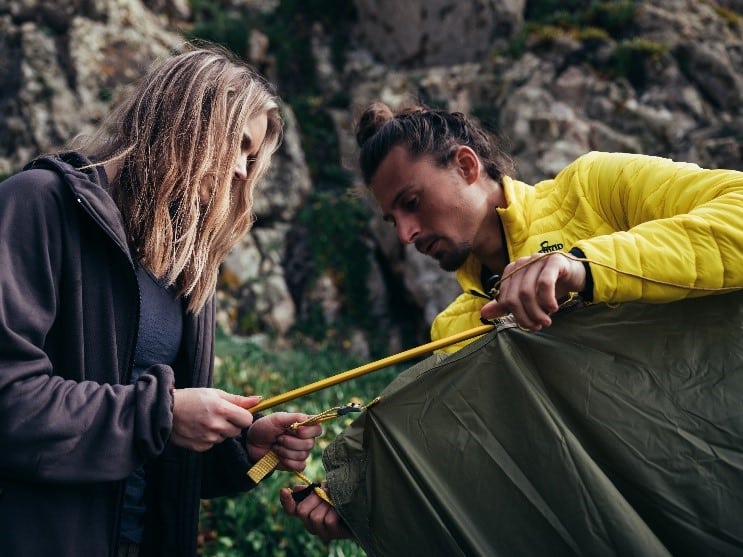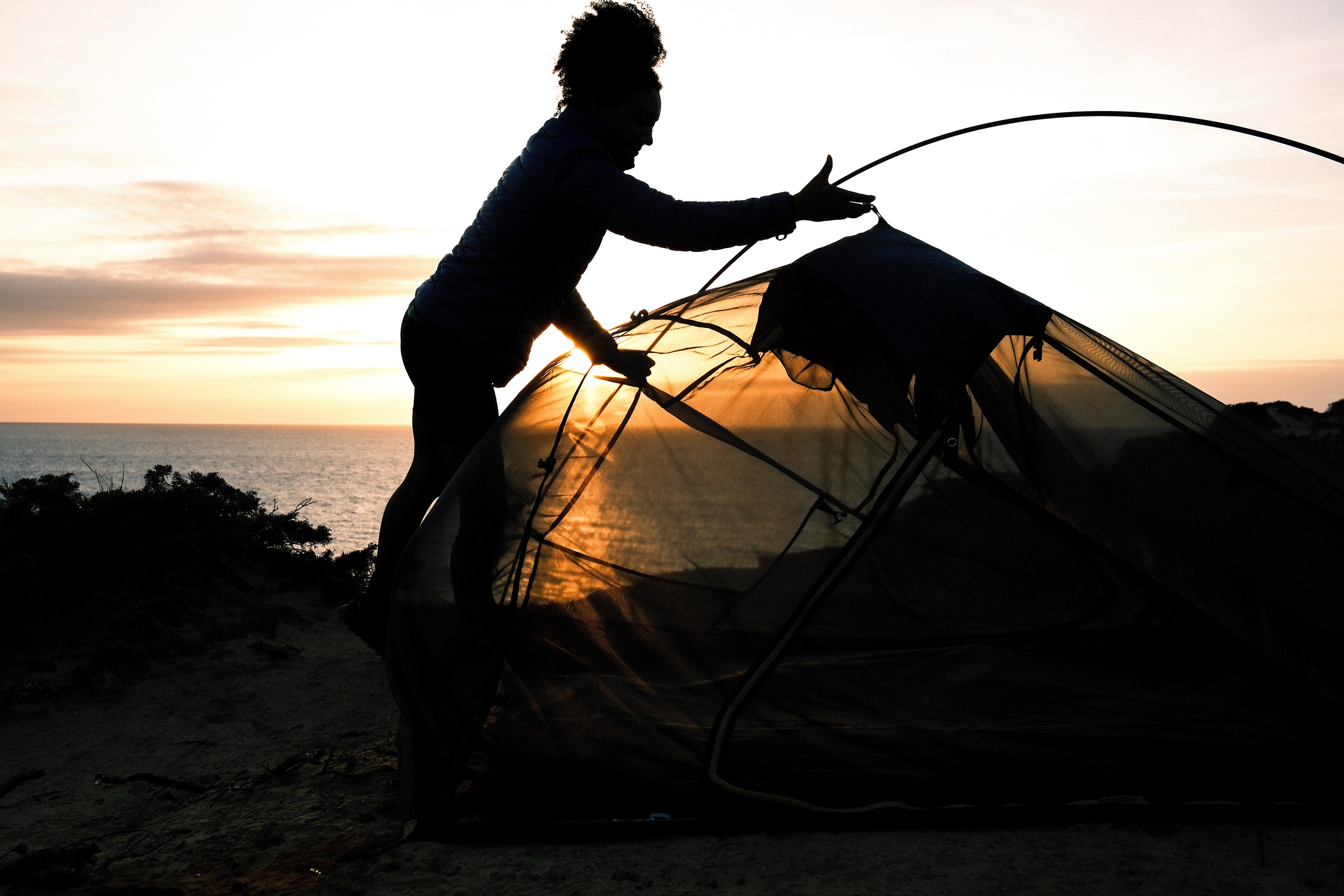Tent poles: the different types and tips for longevity
Tent poles are one of the most important parts of a tent. In good weather and proper use, most poles will hold up well.
However, in adverse conditions the poles are put to the test. The poles have to endure a lot, for example when stretching the canvas or in strong winds.
In this article, we'll tell you about the different types of tent poles and share some tips on how to take care of and prolong the life of your tent poles.

Types of poles
There are a lot of different tent poles available on the market. In general, we can distinguish 4 types of poles: steel, fiberglass, aluminum and inflatable poles:
Steel tent poles
These poles are very strong and are mainly used for large, heavy tunnel tents. And heavy they are.
With all the developments in the tent pole market regarding light weight, these types of poles are used less and less.
Fiberglass poles
Chances are your tent has fiberglass poles. These poles are very common and the advantage is that they are easy and cheap to repair.
However, fiberglass poles need to be treated with care because if they are put under a lot of pressure they can break and splinter.
In this way, they can also cause damage to your tent. Fiberglass poles are lighter than steel poles and are ideal for long term camping.
Expert tip: for a trekking or tour, don't choose a tent with fiberglass poles. Frequent mounting and dismounting of the tent degrades the quality of the poles.
Aluminum poles
Better nylon, cotton and polycotton tents will use aluminum poles. The poles are very light and strong and can be pre-bent. There are many possibilities in terms of tent architecture, for example, steeper walls and thus more interior space can be created.
Aluminum poles last a long time - even if you put up and take down your tent frequently - and can withstand all weather conditions. The lightest tents usually have aluminum poles.
Our preference is always for lightweight aluminum poles. Strong, light and compact, in short: everything you are looking for in tent poles.
In our Jade, Bedouin and Dogon tents we use aluminum DAC tent poles. These poles are strong, light and made using a more sustainable process.
Airbeams
You see them more and more: tents with TPU air tubes instead of poles. You fill the tubes with air using a pump and inflate your tent, which makes setting up super easy!
Drawbacks are that the tubes can leak and the total package is large and heavy. Our Dogon 4 TC Air Tent has an airbeam frame and comes including a pump and repair kit.
Longevity of your poles
Always keep the following factors in mind when caring for your tent poles:
-
- Undue pressure or force can cause damage and bend a pole section (for aluminum poles) or even break it (for fiberglass poles). Always handle your poles with care and don't bend them more than intended. It can be a good idea to carry a Tent Pole Repair Tube and weatherproof tape in your emergency kit, for a quick and easy fix in case of a broken pole.
- Make sure your tent poles are clean and dry when you store them. This way you will prevent mold and rust. Rust is especially common with steel poles. You can treat your steel poles with car wax to prevent rust. Is there any rust? Then lightly go over it with sandpaper and apply some anti-rust agent.
- Pole sections are held together with elastic. If stored incorrectly, the elastic can dry out and loose its tension. To store a pole correctly, separate the sections starting from the middle of the pole, not at one of the ends. First, divide the stick into 2 (nearly) equal parts and then do the same with the two remaining halves. This way, the tension on the elastic will be the same everywhere.

